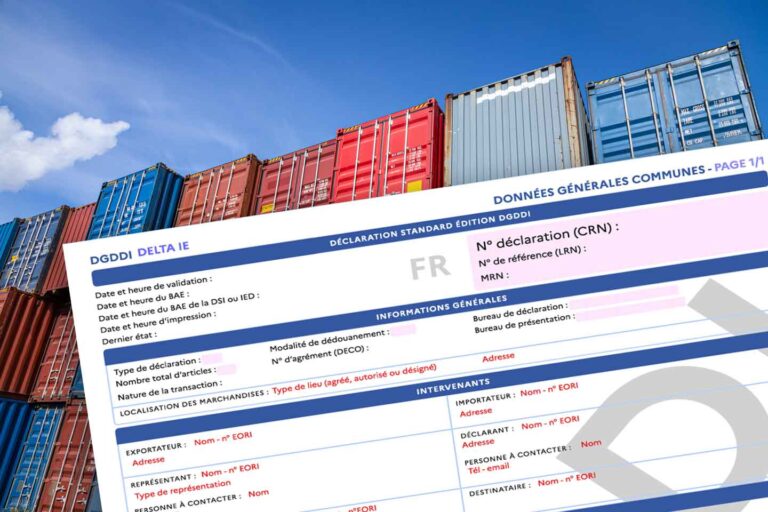In a context of geopolitical tensions and protectionist tendencies, the Comprehensive Economic and Trade Agreement (CETA) serves as a strategic lever to boost bilateral trade between Canada and the European Union. Provisionally implemented since 2017, it facilitates exports, business establishment, and strengthens regulatory cooperation. This trade agreement aims to stimulate growth, protect investments, and ensure fair market access through the reduction of tariff and customs barriers.
A Concrete Response to Current International Trade Challenges

Amid rising economic nationalism, logistical disruptions, and the increasing digitalisation of trade, CETA provides a stable, predictable, and attractive framework for securing trade between Canada and the European Union.
In particular, this trade agreement enables:
- Securing bilateral trade within a harmonised legal framework;
- Establishing mutual trust between foreign investors and signatory states;
- Supporting SMEs in their export efforts through a reduction in customs costs and constraints.
Through these mechanisms, the new agreement helps to neutralise the effects of the trade war affecting certain markets, while offering European businesses a more stable framework to operate on the international stage.
Strengthened Economic Cooperation Between Two Historic Partners

CETA is not limited to a tariff agreement. Beyond strictly economic aspects, this agreement with the EU places particular emphasis on:
- The sustainability of bilateral trade and corporate social responsibility (CSR);
- Environmental protection, with specific clauses on climate and the commitments of the Paris Agreement;
- Mutual recognition of professional qualifications, promoting the mobility of skilled workers between the two regions.
In summary, this free trade agreement serves as a tool for regulatory convergence and ethical cooperation between two economic models based on democracy, law, and transparency.
CETA: Eliminating Tariff Barriers for Facilitated Trade

One of the main benefits of the Comprehensive Economic and Trade Agreement (CETA) lies in the extensive elimination of customs duties and the simplification of trade with Europe, enabling businesses to import and export more freely.
Harmonisation of Customs Procedures to Streamline Trade
In addition to the elimination of customs duties, the new agreement also tackles non-tariff barriers that previously hindered trade.
Here is a summary table of the customs simplification measures provided by this agreement:
| Measure Planned | Description | Benefits for Businesses |
|---|---|---|
| Simplification of Customs Procedures | Harmonised Processes for Import/Export | Reduction in Delays and Logistics Costs |
| Mutual Recognition of Technical Regulations | Products Certified in One Country Recognised in the Other | Fewer Duplications and Certification Costs |
| Facilitated Access to Information | Trade Information Portals | Better Understanding of Customs Formalities |
Unprecedented Opening of Public Procurement Markets
One of the most innovative aspects of the CETA trade agreement lies in access to public procurement markets between Canada and the European Union.
The table below outlines the main aspects of this component:
| Component Concerned | Details | Examples |
|---|---|---|
| Levels of Government | Opening of Public Procurement Markets at All Levels | Federal and Provincial Tenders |
| Types of Entities | Public Entities Accessible to European Companies | Universities, Hospitals, State-Owned Enterprises |
| Sectors Opened | Sectors Covered by the CETA Agreement | Construction, IT, Professional Services, Transport, Environment, etc. |
This opening fully aligns with the logic of European agreements, while fostering a climate of trust between partners.
Enhanced Protection for Investors
The CETA trade agreement establishes a stable and predictable legal framework for foreign investments, essential in the context of modern bilateral trade agreements. This security is particularly strategic for European and Canadian companies seeking to develop long-term activities in a transatlantic space.
Among the protection measures provided by the new agreement are:
- Dispute resolution mechanisms between investors and states (ICS – Investment Court System), ensuring fairness and transparency;
- Protection of investors’ rights against unjustified or discriminatory expropriation;
- Safeguards against unforeseen or arbitrary regulatory obstacles.
This framework provides concrete legal security for companies investing in the EU–Canada space, shielded from trade or political tensions.
For those establishing a physical presence in Canada or Europe, CETA ensures an environment compliant with the European Commission’s international standards.
Canada vs United States: A Strategic Advantage for European Companies

While trade tensions between Canada and the United States weaken their economic relations (tariffs of up to 35%), the European Union offers Canada a more stable and predictable partnership through CETA. This agreement enhances the competitiveness of Canadian companies in the European market and, conversely, enables European companies to use Canada as a gateway to North America, bypassing U.S. barriers through the USMCA.
CETA: A Lever for Circumvention and Opportunity for Europe
To facilitate international trade and reduce technical barriers, the CETA agreement goes beyond the elimination of customs duties. It also implements concrete measures to harmonise customs procedures and streamline flows between the European Union and Canada.
The table below outlines the main measures of this agreement:
| Measure | Description | Advantages for Businesses |
|---|---|---|
| Simplification of Customs Procedures | Implementation of Harmonised Processes for Imports and Exports | Reduction in Delays, Logistics Costs, and Administrative Procedures |
| Mutual Recognition of Technical Regulations | Automatic Acceptance of Conformity Certifications in Certain Sectors | Faster Market Access, Elimination of Duplicated Tests or Standards |
| Facilitated Access to Trade Information | Creation of Online Portals to Centralise Regulations and Procedures | Improved Visibility of Regulatory Requirements, Time Savings for SMEs |
A More Attractive Europe for Canadian Companies

With its 27 member states and over 447 million inhabitants, the European Union is one of the largest unified markets in the world.
Thanks to CETA, Canadian companies now access it under far more advantageous conditions.
Concretely, the free trade agreement enables:
- Facilitated establishment through a reduction in customs and regulatory barriers;
- Access to European public procurement markets, a rare privilege for companies outside the EU;
- An environment conducive to innovation, intellectual property, and GDPR compliance, thereby enhancing the attractiveness of the European market.
This new agreement aligns with European agreements aimed at stimulating investment, innovation, and strategic transatlantic partnerships.
Two Complementary Markets with High Potential
One of the major strengths of the CETA trade agreement lies in the economic complementarity between Canada and the European Union.
This trade agreement allows the strengths of each region to be combined:
- Canada, with its natural resources, clean technologies, and entrepreneurial dynamism;
- Europe, with its industrial expertise, vast consumer market, and high-quality standards.
The trade agreement thus serves as a lever for innovation, cooperation, and resilience in the face of crises, including in the context of a global trade war.
A Win-Win Partnership for Businesses
| Indicator | European Union | Canada |
|---|---|---|
| Number of Companies | 23 million | 3 million |
| Population | 447 million | 38 million |
The European Union represents a strategic market for Canadian companies seeking to import and forge new partnerships.
Canada, with its clear legal framework and human-scale market, offers European companies tangible opportunities.
Our Tailored Support for Your Transatlantic Projects
To fully benefit from the agreement, it is essential to comply with the fiscal, social, and customs obligations specific to each territory.
ASD Group transforms your potential constraints into performance levers through tailored, practical solutions for every situation:
| Service / Area | Challenge Encountered | ASD Group Solution | Benefit for the Company |
|---|---|---|---|
| Tax Representation in Europe | Any Canadian company wishing to import, sell, or provide services in the EU without a local establishment must comply with local VAT regulations. | We provide your tax representation, manage your VAT registration, declarations, and ensure the compliance of your financial flows. | Securing your commercial operations and compliance with European tax regulations. |
| Legal Representation in Canada | European companies operating in Canada must comply with local regulations: taxes, fiscal obligations, social requirements, etc. | We assist you in creating a local entity or suitable status and provide your legal representation. | Compliant and optimised establishment in the Canadian market. |
| GDPR Compliance | GDPR applies to any company processing data of European residents, even if based outside the EU. | Our experts guide you through GDPR compliance, drafting legal notices, privacy policies, and selecting subcontractors. | Compliance with European data protection requirements. |
| Non-Resident Employer Certification | Seconding an employee to Canada without an establishment can lead to complex tax obligations. | We assist you in obtaining non-resident employer certification, avoiding withholding tax on salaries (subject to conditions). | Simplification of your missions in Canada and tax optimisation. |
| Withholding Tax Exemption | Certain foreign companies face unjustified withholding tax on their services. | Thanks to CETA and bilateral tax treaties, we help you obtain the necessary exemptions from Canadian tax authorities. | Avoid double taxation and recover your cash flow. |
| Management of GST / HST / QST Taxes | Canada applies several tax regimes depending on the province: GST (federal), HST, QST. | We manage your registrations, declarations, and payments related to these taxes, province by province. | Compliance ensured at both provincial and federal levels. |
Our teams, based in Europe and North America, have a thorough understanding of the nuances of both regions. This dual expertise ensures the smooth, secure, and 100% compliant implementation of your international strategy.
Contact an ASD Group expert today to launch or secure your transatlantic operations.



